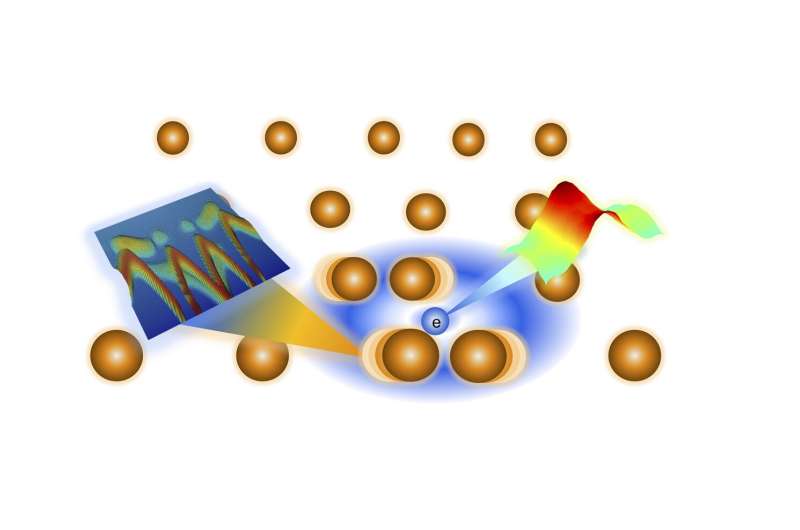How the electronic properties and atomic vibrations of uranium are linked

Researchers have explained how the electronic properties and atomic vibrations of uranium are linked.
Uranium is a naturally occurring radioactive element, whose nucleus decays into other elements. It emits what scientists call the "alpha particle," the nucleus of a helium atom. Scientists have successfully designed methods for using its radioactivity to create nuclear power, which has the potential to solve the world"s energy demands. However, the electronic and thermal properties of uranium are not very well understood. An example of electronic properties includes understanding how the element behaves like a superconductor at temperatures close to the absolute zero temperature, or -273 ̊C.
Researchers often use a technique called the "Fourier transform," named after its inventor Joseph Fourier, to simplify studying properties of systems. For example, while tracing how a physical quantity changes with time, they study it in frequency, which is called the "Fourier space" of time. Similarly, the Fourier transform of any physical quantity existing in space is how it varies with momentum, the Fourier space of length. When scientists look at the implications of quantum mechanics in the Fourier transform of the atomic vibrations of some solids, an anomaly known as the "Kohn anomaly" emerges. It is an aberration or problem in the solid"s mathematical description in the Fourier space. The variation of the energy in the "momentum space" affects how solids behave as its atoms carry out small vibrations around their average positions.
"Phonons" are the quanta of the vibrational modes of solids, which interact with the electrons of the solid. Strong interactions between phonons and electrons lead to the Kohn anomaly. A study by researchers from the Indian Institute of Technology Bombay (IIT Bombay) and the Bhabha Atomic Research Centre (BARC), Mumbai, has explained why uranium exhibits multiple Kohn anomalies. Their study, funded by the Industrial Research and Consultancy Centre of IIT Bombay, the Department of Atomic Energy, and the Ministry of Human Resource Development (now Ministry of Education), Government of India, was published in the journal Physical Review Letters.
The researchers re-analyzed the data from inelastic neutron scattering experiments on the uranium carried out in 1979. These experiments probed uranium's atomic vibrations in the Fourier space, which they were aiming to use to understand its heat dissipation under an extreme nuclear environment. However, on re-analysis, they discovered Kohn anomalies in multiple atomic vibrations. These anomalies were theoretically proposed to exist in one-dimensional systems, but their observation in three-dimensional materials was rare.
To understand this peculiar observation, the researchers carried out extensive computer simulations using the laws of quantum mechanics to study how the electrons and phonons interact in the material, and what effect the interaction has on the data in the Fourier space. "The simulations were computationally intensive, and we had to use supercomputing facilities located at IIT Bombay and BARC, on which the simulations ran for ten days each," says Aditya Prasad Roy of IIT Bombay, first-author of the study.
"The anomaly is the strongest manifestation of electron-phonon interaction," explains Prof Dipanshu Bansal of IIT Bombay, one of the authors of the study. Superconductors also exhibit such strong interactions between electrons and phonons. The explanation of the Kohn anomaly in uranium is a step towards understanding its superconductive behavior at near absolute zero temperatures. "Our work resolves the five-decade-old mystery of this important nuclear material," says Prof Bansal. Currently, the researchers are investigating the same anomaly in other uranium and thorium-based nuclear materials.
More information: Aditya Prasad Roy et al. Quasi-One-Dimensional Fermi Surface Nesting and Hidden Nesting Enable Multiple Kohn Anomalies in α -Uranium, Physical Review Letters (2021). DOI: 10.1103/PhysRevLett.126.096401
Journal information: Physical Review Letters
Provided by Indian Institute of Technology



















